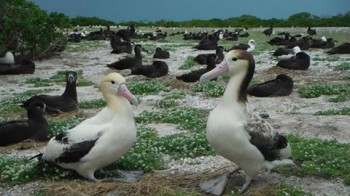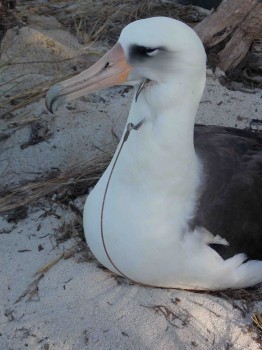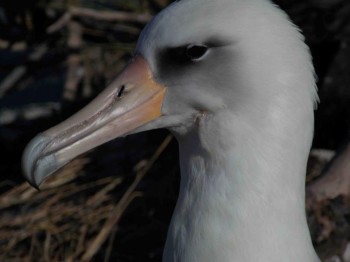Hannah Froy (Institute of Evolutionary Biology, University of Edinburgh, UK) and colleagues have published in the on-line/open-access journal PLoS ONE on whether Wandering Albatrosses Diomedea exulans show signs of ageing in their foraging behaviour.
The paper’s abstract follows:
“Age-related variation in demographic rates is now widely documented in wild vertebrate systems, and has significant consequences for population and evolutionary dynamics. However, the mechanisms underpinning such variation, particularly in later life, are less well understood. Foraging efficiency is a key determinant of fitness, with implications for individual life history trade-offs. A variety of faculties known to decline in old age, such as muscular function and visual acuity, are likely to influence foraging performance. We examine age-related variation in the foraging behaviour of a long-lived, wide-ranging oceanic seabird, the wandering albatross Diomedea exulans. Using miniaturised tracking technologies, we compared foraging trip characteristics of birds breeding at Bird Island, South Georgia. Based on movement and immersion data collected during the incubation phase of a single breeding season, and from extensive tracking data collected in previous years from different stages of the breeding cycle, we found limited evidence for age-related variation in commonly reported trip parameters, and failed to detect signs of senescent decline. Our results contrast with the limited number of past studies that have examined foraging behaviour in later life, since these have documented changes in performance consistent with senescence. This highlights the importance of studies across different wild animal populations to gain a broader perspective on the processes driving variation in ageing rates.”

Wandering Albatrosses, photograph by Richard Phillips
With thanks to Richard Phillips for information.
Reference:
Froy, P.H., Lewis, S., Catry, P., Bishop, C.M., Forster, I.P., Fukuda, A., Higuchi, H., Phalan, B., Xavier, J.C., Nussey D.H. & Phillips, R.A. 2015. Age-related variation in foraging behaviour in the Wandering Albatross at South Georgia: no evidence for senescence. PLoS ONE 10(1): e0116415. doi:10.1371/journal.pone.0116415.
John Cooper, ACAP Information Officer, 11 January 2015

 English
English  Français
Français  Español
Español 





